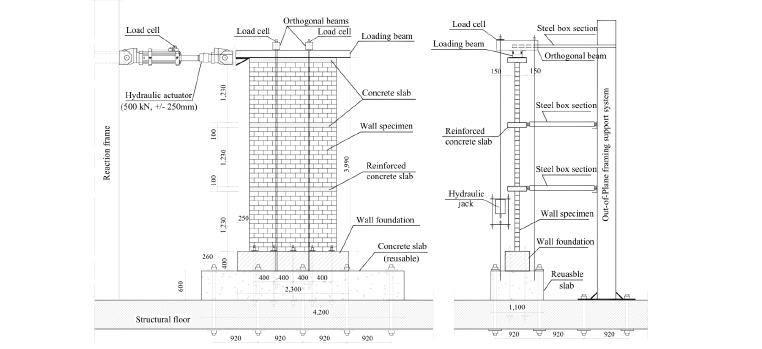1 PhD student, Department of Civil Engineering, McMaster Univ., Hamilton, Canada. elazizo@mcmaster.ca
2 PhD, Martini, Mascarin and George Chair in Masonry Design, McMaster Univ., Canada. eldak@mcmaster.ca
3 PhD, Professor Emeritus, McMaster Univ., Hamilton, Canada. drysdale@mcmaster.ca
ABSTRACT
Two Reinforced Concrete structural walls were compared to two Reinforced Masonry (RM) structural walls. The RM walls configurations were rectangular and boundary elements previously reported [1]. The reinforced concrete (RC) walls were constructed with the exact outer dimensions with the two different configurations. The RC had the same axial load applied and similar theoretical and experimental curvature ductility µΦ. All the walls were three-story half-scaled. The RC walls were designed according to the Canadian concrete design code, CSA A23.3-04[2]. Lateral actuator was used to simulate the seismic loading connected to the top of the wall. Applying a fully cyclic lateral loading on the walls was the loading procedure in this experimental research. Potentiometers were placed at various locations to calculate lateral displacements, sliding and to compute the average curvature profile. All the walls failed in a flexural manner. The hysteresis loops, curvature profiles and the failure mode for each wall were discussed. Rectangular RC and RM walls had the same ultimate top drift of 1.2 % while the boundary elements RC and RM walls exerted ultimate top drifts of 1.58% and 2.40%, respectively. The load envelope of all the walls were plotted and compared. RM exerted higher displacement ductility µΔ compared to its RC counterparts. The RM walls had µΔ of 5 and 10 for the rectangular and the boundary element wall, compared to 4 and 6 for their corresponding RC walls.
KEYWORDS: boundary elements, curvature ductility, curvature profile, hysteresis loops, reinforced concrete, reinforced masonry
583.pdf



